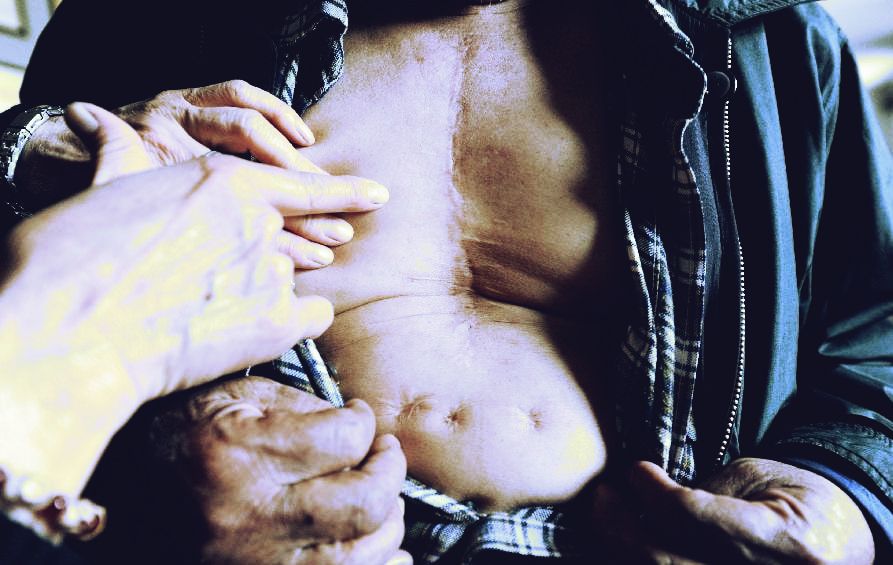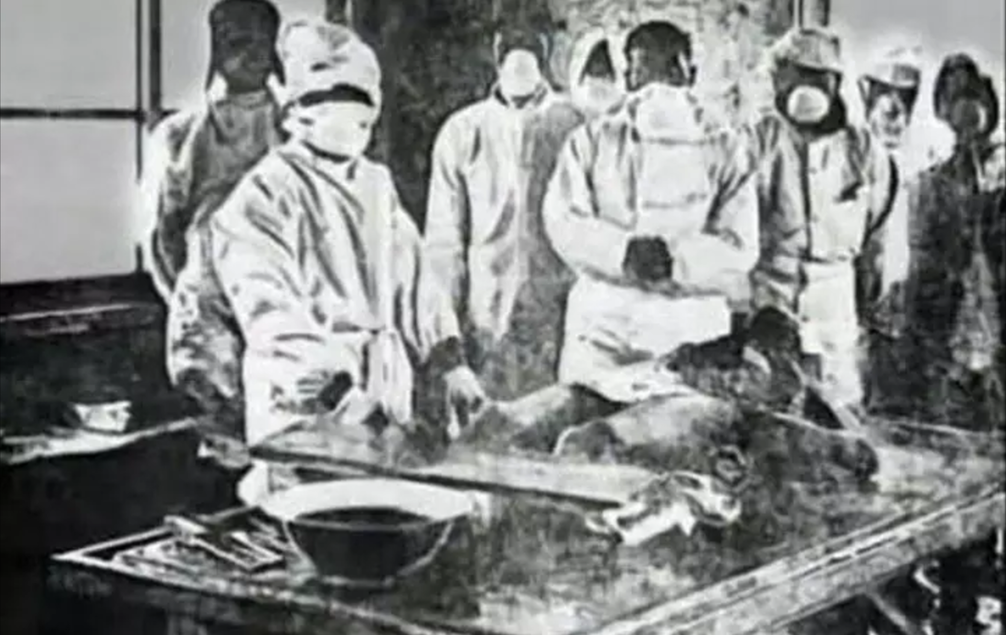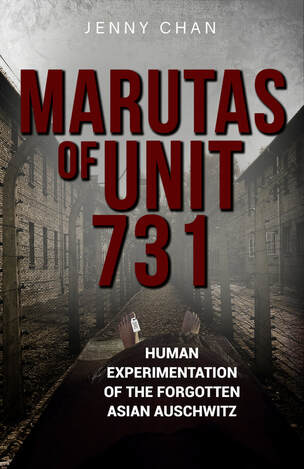- Home
- Stories
-
Internship
- Summer 2024 Internship
- Summer 2023 Internship
- Fall 2022 Internship
- Summer 2022 Internship
- Summer 2021 Internship
- Fall 2020- Spring 2021 Internship
- Summer 2020 Internship
- Fall 2019 Internship
- Summer 2019 Internship >
- School Year 2018-2019 Internship
- Summer 2018 Internship >
- Fall 2017 Internship
- Summer 2017 Internship >
- Books
- Archives
-
Resource Page
-
Supplementary Research Guides
>
- Unit 731 - Guide >
-
Philippines' Resistance - Guide
>
- Philippines World War II Timeline
- The Japanese Invasion & Conquest of the Philippines
- Bataan Death March
- Formation of Underground Philippines Resistance
- Supplies of the Guerrilla Fighters
- The Hukbalahap
- Hunter's ROTC
- Marking's Guerrillas
- United States Army Forces in the Philippines of Northern Luzon (USAFIP-NL)
- The Aetas
- Chinese and Filipino-Chinese Nationalist Guerrilla Units
- The Female Faces of the Philippine Guerrillas
- Rising Sun Flag - Guide >
- Pinay Guerrilleras - Guide >
- Fall of Singapore - Guide >
- Three Years and Eight Months - Guide >
- Siamese Sovereignty - Guide >
- The Khabarovsk War Crimes Trial - Guide >
- Unit 731 Cover-up : The Operation Paperclip of the East - Guide >
- Marutas of Unit 731 - Guide >
- Prince Konoe Memoir - Guide >
- Competing Empires in Burma - Guide >
- Battle of Shanghai - Guide >
- Ishi Shiro - Guide >
- Taiwan The Israel of the East - Guide >
- Seeking Justice for Biological Warfare Victims of Unit 731 - Guide >
- Rice and Revolution - Guide >
- Clash of Empires - Guide >
-
Hunger for Power and Self-SufficiencyI - Guide
>
- The Influence of War Rations on Post-War Culinary Transformations
- How World War II Complicated Food Scarcity and Invention
- American Military Innovations
- Government-Sponsored Food Inventions in Europe during World War II
- Feeding the Army: The Adaptation of Japanese Military Cuisine and Its Impact on the Philippines
- Mixed Dishes: Culinary Innovations Driven by Necessity and Food Scarcity
-
Denial A Quick Look of History of Comfort Women and Present Days’ Complication - Guide
>
- The Comfort Women System and the Fight for Recognition
- The Role of Activism and International Pressure
- The Controversy over Japanese History Textbooks
- The Sonyŏsang Statue and the Symbolism of Public Memorials
- Activism and Support from Japanese Citizens
- The Future of Comfort Women Memorials and Education
- Echoes of Empire: The Power of Japanese Propaganda - Guide >
- Lesson Plans >
-
Supplementary Research Guides
>
Victims of the Unit 731
Ethics did not exist in Ishii’s Network. Everything was done efficiently in the name of science. Vivisection was conducted on human beings to better observe first-hand how diseases affected each organ once a human dies; the putrefactive bacteria could set in and destroy the result of a good experiment. Even though the logs held in Unit 731’s inner prison were in shackles, their health and nutrients were monitored since good health could guarantee the best scientific results for their experiments. An Ishii technician described what the maruta were served. “Only at noon was there a small amount of soybean mixed in… Full consideration was given to the nutrient value of supplements, and pork was served in a different menu almost every day.” Every laboratory at Pingfan had a large bulletin board with technicians recording data such as “Specific date; 3 maruta, numbers so and so, were given injections of so-and-so, x cc; we need x number of hearts or x number of livers, etc.” In a testimony given on December 28 by witness Furuichi during the Khabarovsk Trial, he described how “a Russian woman was infected with syphilis to allow the scientists to find out how to prevent the spread of the disease. Many babies were born to women who had been captured and become experimental subjects. Some women were kidnapped while pregnant; others became pregnant after forced sex acts in the prisons, enabling researchers to study the transmission of venereal disease.
Victim of the Unit 731
Ishii’s network had recruited Youth Corps members for vivisection as well. Since wartime Japan fostered a sense of nationalism in everyone, children were encouraged to report to the school principal any anti-war sentiments of their parents. The police were then to investigate the parents. Many children were also encouraged by their teachers to enter the Youth Corps. Some Youth Corps members were just 15-17 when they started working at Unit 731. They went through rigorous training in biology, foreign languages, math, and bacteriology. Most of them became assistants to researchers at Unit 731 where their main duty was to remove organs from a human body during a vivisection. According to former Youth Class Member at Unit 731, Shinotsuka Ryu, “At first I was terrified, my legs were shaking, they told me I could use the longest brush. After the vivisection, the victims were unrecognizable. I was ordered to put their organs into containers. We used them to cultivate bacteria.”
Vivisection experiments
It was estimated that about 3000 people went through human experimentations in Unit 731 from 1940 to 1945. However, that is considered a low estimate since the capacity of the prisons was a lot higher and some victims did not survive for more than an average of two weeks.
Experimenting on humans inside of Unit 731
The Reports of A, G, and Q by Shozo Kondo Toshu are examples of such vivisection experiments. Each report was 350 to 800 pages long and represented only a small fraction of the methods used to turn human lives into data points for scientific papers. The author’s reports sounded very removed from the human lives that were lost through his research.
Report “A” described how victims react to anthrax. About 30 subjects were used in that study and the reports of different effects of anthrax was very objective. There were no notes on the subjects’ names, gender, ethnicities, or identification of any kind. However, the age range of the subjects averaged from 20s to 30s. Although there was no definite gender listed for the subjects, the presence of testicles examined as an organ showed all the test subjects were males. All subjects infected with anthrax in the study survived around 2-4 days.
Descriptions of the vivisections and procedures included the use of X-Rays before vivisections. The consistent mention of “X-rays during clinical tests” suggests that most, if not all, of the subjects were examined closely while infected with anthrax until they died. The “A” Report lacks any specific descriptions of vivisection or autopsy procedures, but shows clearly how the scientists converted the test subjects’ lives into a report of test subject data.
Report “A” described how victims react to anthrax. About 30 subjects were used in that study and the reports of different effects of anthrax was very objective. There were no notes on the subjects’ names, gender, ethnicities, or identification of any kind. However, the age range of the subjects averaged from 20s to 30s. Although there was no definite gender listed for the subjects, the presence of testicles examined as an organ showed all the test subjects were males. All subjects infected with anthrax in the study survived around 2-4 days.
Descriptions of the vivisections and procedures included the use of X-Rays before vivisections. The consistent mention of “X-rays during clinical tests” suggests that most, if not all, of the subjects were examined closely while infected with anthrax until they died. The “A” Report lacks any specific descriptions of vivisection or autopsy procedures, but shows clearly how the scientists converted the test subjects’ lives into a report of test subject data.
Related Book
Marutas of Unit 731: Human Experimentation of the Forgotten Asian AuschwitzEuphemistically labeled as the "Water Supply and Prophylaxis Administration" and "HippoEpizootic Administration" of the Imperial Japanese Army, Unit 731 and Unit 100, as well as their subsidiary branches, performed human experimentation on the innocent under the leadership of Commanding Officer and Doctor Ishii Shiro. The Kempeitai (military police) captured the "lab rats" for Unit 731's prison. The prisoners included Chinese patriots, nearby civilians, Russians, and Allied prisoners of war. Although the exact number of victims is unclear due to Japan's attempts to liquidate evidence of their heinous crimes at the closing of the war, it is estimated to have ranged from 3,000-250,000 innocent men, women, and children. The cruel experiments and medical procedures were carried out by the brightest medical students, scientists, researchers, and staff that Imperial Japan had to offer.
To dehumanize prisoners in their minds, the scientists of Unit 731 called their test subjects "Marutas" or logs. Unit 731 faculty's observation of Marutas included their reaction to bubonic plague, typhoid, paratyphoid A and B, typhus, anthrax, smallpox, tularemia, infectious jaundice, gas gangrene, tetanus, cholera, dysentery, glanders, scarlet fever, undulant fever, tick encephalitis, "songo" or epidemic hemorrhagic fever, whooping cough, diphtheria, pneumonia, erysipelas, epidemic cerebrospinal meningitis, venereal diseases, tuberculosis, salmonella, frostbites, and many more deadly viruses, germs, and bacteria. To observe the real-time effects of these harmful agents, these prisoners were often subject to vivisections without the use of anesthesia. In the case where a human experimental subject was exhausted from the experiments, they were to be killed one way or another. Some test subjects were handed potassium cyanide tablets, while others ingested porridge with heroin. These "medical doctors" who performed routine human experiments were allowed to escape persecution, unlike their Nazi counterparts in Europe. This affair became infamously known as the elaborate American cover-up of war crimes, offering these perpetrators of crimes against humanity-- including Emperior Hirohito and Ishii Shiro--immunity in exchange for US access to Unit 731 research. Instead of punishment, many of these criminals were rewarded handsomely with great careers after the war, while thousands of Chinese families mourned their loved ones' lives which had lost at Unit 731 or dealt with the permeating consequences of sustaining a bacterial attack in their village. |
|
Pacific Atrocities Education
730 Commercial Street San Francisco, CA 94108 415-988-9889 |
Copyright © 2021 Pacific Atrocities Education.
We are a registered 501 (c)(3) charity. |
- Home
- Stories
-
Internship
- Summer 2024 Internship
- Summer 2023 Internship
- Fall 2022 Internship
- Summer 2022 Internship
- Summer 2021 Internship
- Fall 2020- Spring 2021 Internship
- Summer 2020 Internship
- Fall 2019 Internship
- Summer 2019 Internship >
- School Year 2018-2019 Internship
- Summer 2018 Internship >
- Fall 2017 Internship
- Summer 2017 Internship >
- Books
- Archives
-
Resource Page
-
Supplementary Research Guides
>
- Unit 731 - Guide >
-
Philippines' Resistance - Guide
>
- Philippines World War II Timeline
- The Japanese Invasion & Conquest of the Philippines
- Bataan Death March
- Formation of Underground Philippines Resistance
- Supplies of the Guerrilla Fighters
- The Hukbalahap
- Hunter's ROTC
- Marking's Guerrillas
- United States Army Forces in the Philippines of Northern Luzon (USAFIP-NL)
- The Aetas
- Chinese and Filipino-Chinese Nationalist Guerrilla Units
- The Female Faces of the Philippine Guerrillas
- Rising Sun Flag - Guide >
- Pinay Guerrilleras - Guide >
- Fall of Singapore - Guide >
- Three Years and Eight Months - Guide >
- Siamese Sovereignty - Guide >
- The Khabarovsk War Crimes Trial - Guide >
- Unit 731 Cover-up : The Operation Paperclip of the East - Guide >
- Marutas of Unit 731 - Guide >
- Prince Konoe Memoir - Guide >
- Competing Empires in Burma - Guide >
- Battle of Shanghai - Guide >
- Ishi Shiro - Guide >
- Taiwan The Israel of the East - Guide >
- Seeking Justice for Biological Warfare Victims of Unit 731 - Guide >
- Rice and Revolution - Guide >
- Clash of Empires - Guide >
-
Hunger for Power and Self-SufficiencyI - Guide
>
- The Influence of War Rations on Post-War Culinary Transformations
- How World War II Complicated Food Scarcity and Invention
- American Military Innovations
- Government-Sponsored Food Inventions in Europe during World War II
- Feeding the Army: The Adaptation of Japanese Military Cuisine and Its Impact on the Philippines
- Mixed Dishes: Culinary Innovations Driven by Necessity and Food Scarcity
-
Denial A Quick Look of History of Comfort Women and Present Days’ Complication - Guide
>
- The Comfort Women System and the Fight for Recognition
- The Role of Activism and International Pressure
- The Controversy over Japanese History Textbooks
- The Sonyŏsang Statue and the Symbolism of Public Memorials
- Activism and Support from Japanese Citizens
- The Future of Comfort Women Memorials and Education
- Echoes of Empire: The Power of Japanese Propaganda - Guide >
- Lesson Plans >
-
Supplementary Research Guides
>


